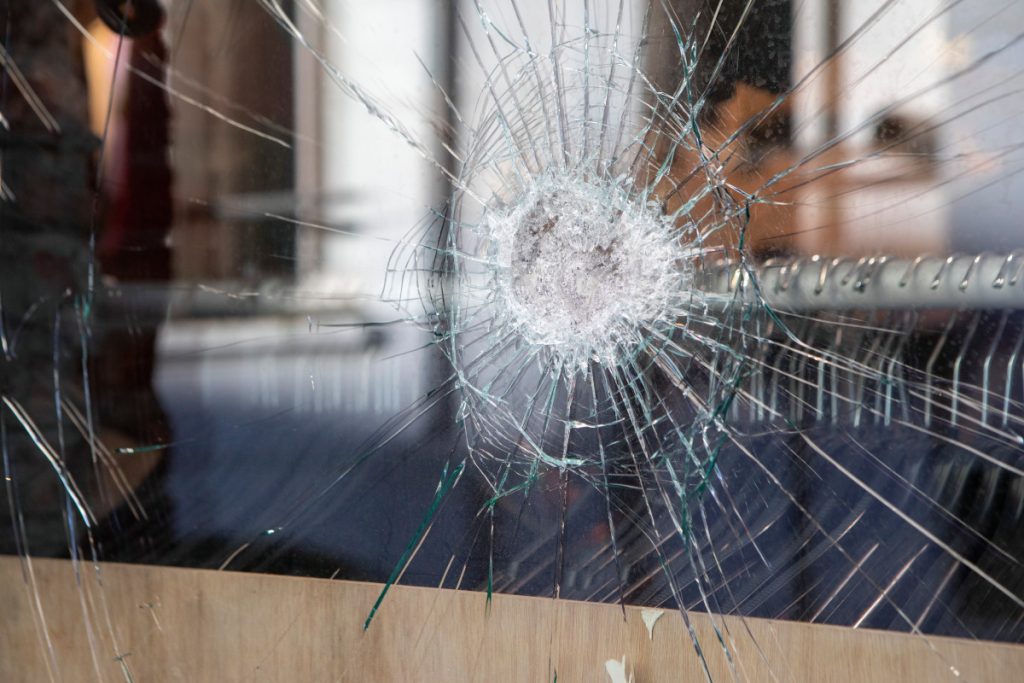1099 New York Avenue
Washington, DC

| Security Level | ASTM F3561 1 | Interlayer Options | Interlayer Thickness |
|---|---|---|---|
| Low | 2 | PVB | 0.060″ |
| Low | 2 | SentryGlas® | 0.060″ |
| Medium | 3 | PVB | 0.090″ |
| Medium | 3 | SentryGlas® | 0.090″ |
| Medium | 3 | Saflex™ VS 2 | 0.077″ |
| Medium | 3 | Saflex™ HP | 0.100″ |
| Medium | 4 | PVB | 0.120″ 3 |
| High | 7 | SentryGlas® | 0.180" 3 |
| High | 7 | Saflex™ VS 2 | 0.154" 3 |
| 1 Laminated glass performance levels have been tested in accordance to ASTM F3561 Appendix X1, which indicates glass-only performance capability and is not a system rating. To qualify, window and door systems must be tested as a complete assembly of glass and glazing system.
2 Saflex™ VS is also referred to as Saflex Storm for the hurricane impact market, Saflex™ VS and Storm relate and refer to the same interlayer. 3 Cumulative interlayer thickness within a glass configuration. Two layers of the base interlayer are used. | |||
| Performance Condition | Protection Level | Hazard Level | Window Glazing Response |
|---|---|---|---|
| 1 | Safe | None | Glazing does not break. No visible damage to glazing or frame. |
| 2 | Very High | None | Glazing cracks but it is retained in the frame. Dusting or very small fragments near sill or on floor acceptable. |
| 3a | High | Very Low | Glazing cracks. Fragments enter space and land on floor no further than 3.3 feet from the window. |
| 3b | High | Low | Glazing cracks. Fragments enter space and land on floor no further than 10 feet from the window. |
| 4 | Medium | Medium | Glazing cracks. Fragments enter space and land on floor and impact a vertical witness panel at a distance of no more than 10 feet from the windows at a height no greater than 2 feet above the floor. |
| 5 | Low | High | Glazing cracks and window system fails catastrophically. Fragments enter space impacting a vertical witness panel at a distance of no more than 10 feet from the window at a height greater than 2 feet above the floor. |